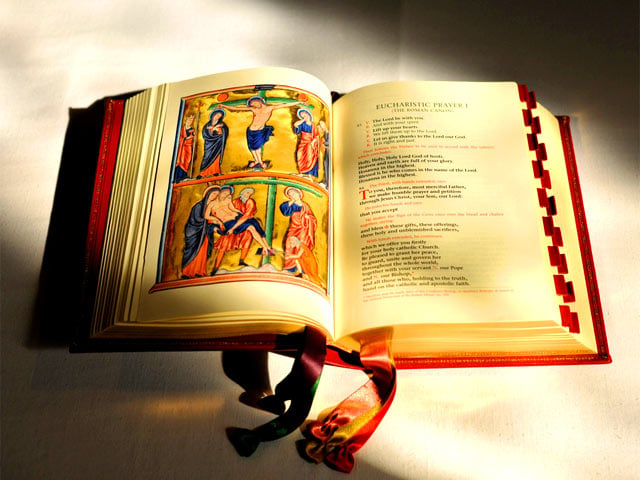- Home
- Our Community
- Our Faith
- Our Ministries
-
Parish Life
- Calendar of Events
- St. Aidan's Video Links
- Parish Blog
- News Archive
- Mass Etiquette and Information
- Ad Orientem News and Facts
- Catholic Links
- Prayers and Announcements
- Luis Dizon Reflections - Archive
- Bulletin
- Contact Us
- Search

Return from Exile (30th Sunday in Ordinary Time)
Click here for this Sunday’s Readings
Jeremiah 30-33 is known as the “Book of Consolation,” because its tone is that of consolation and hope, which contrasts sharply with the pessimistic tone of the rest of the book, which speak mainly of Israel’s sins and God’s punishment for those sins. The main thrust of the Book of Consolation is that although, God punishes His people with exile, in accordance with the curses of the Law (Deut. 28), He will not leave them in that state forever, but will restore them to their land. This culminates in the establishment of the New Covenant, as explained in Jer. 31:31-34.
This specific passage focuses on the return from exile. Israel was exiled by the Assyrians, and Judah by the Babylonians. The Babylonian exile lasted for about 70 years, until God allowed the Jews to return to the Holy Land under the Achaemenid Persians in the late 6th century B.C. On that day, the people are delivered from the “north country,” a reference to the fact that all the invading empires had to come to the land from the north.
The mourning of the people will be replaced by singing and gladness, and God will reiterate His Fatherhood over His people. The language used here is reminiscent of the language found in Exodus 15 (esp. vv. 20-21) suggesting that this restoration is a new Exodus, which is just as mighty and miraculous as the first one.
This return from exile is only a foretaste of God’s ultimate deliverance under Jesus. When this passage says that among the returning exiles are the blind and lame, this foreshadows Jesus’ healing of the blind Bartimaeus (Mk. 10:46-52). Thus, Jesus’ healings represent a greater deliverance than the return from exile. Even this healing is only a foretaste of the ultimate deliverance, which occurs when Jesus saves us from sin on the cross.
This is the greatest deliverance, because it is not only Israel that is saved, but the whole world, and this salvation is not just from earthly oppression, but from the eternal death that is due to sin.
J. Luis Dizon
